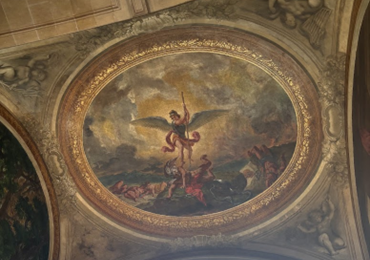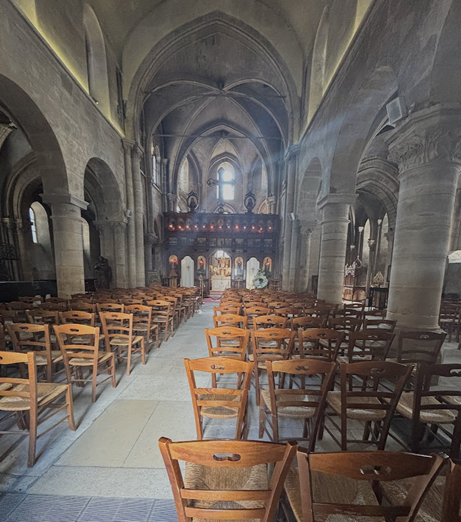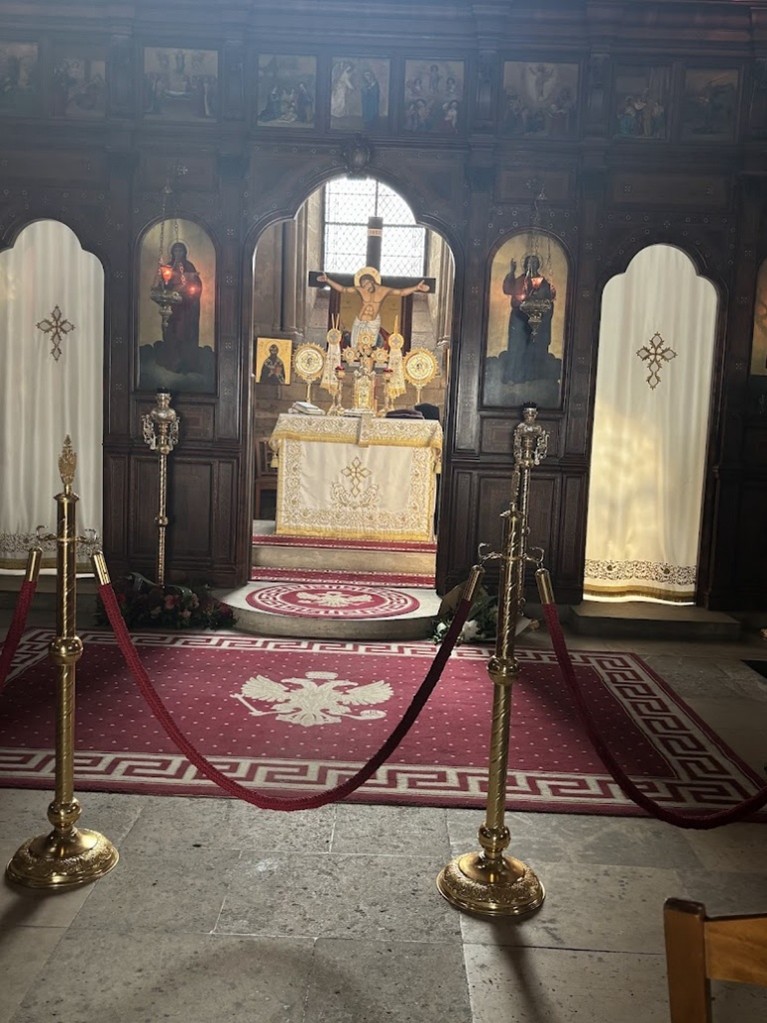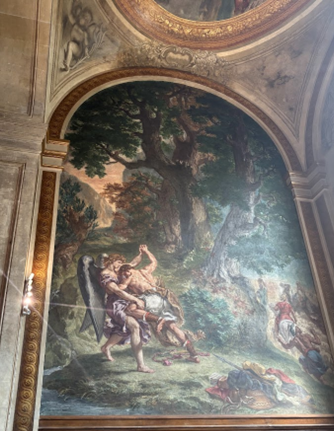
Pilgrimage to Paris: a student’s reflection
Submitted by Alyssa Freihofer
This is a Jubilee year, and according to the United States Conference of Catholic Bishops (USCCB), it is a special occasion for “reconciliation, pilgrimage, and coming home.” This year, during the first week of June, I travelled to Paris, France with a group of 12 other Thomas More students. Each of us had different reasons for going, and mine was to make a pilgrimage and a retreat out of the trip (and perhaps to get theology credits as well).
The past three years have been very busy for me, and I felt a growing desire in my heart for a break from the normal activities of my life and for time to spend with Jesus and think. God answered my prayer through this trip.
Not only was there a 24-hour chapel available to us because we were staying in a convent, but we were also given a free day to do whatever we wished. Interestingly enough, part of one of the routes to Santiago de Compostela (a very famous Catholic pilgrimage site) ran right by the convent. So I spent most of my free day following the trail of shells that mark the path and visiting the churches along the way. Here I will share my thoughts about a few of them with you.

The first is called Saint-Julien-le-Pauvre. It started as a hospital run by a group of monks in the 6th century. Eventually, it became connected with the University of Paris, but it was deconsecrated and used as a general store when the University began to decline. It wasn’t until 1953 that it became a diocesan church again. It is now a Melkite Catholic church. The Melkites follow the Byzantine rite, which requires the construction of an iconostasis in the church.
An iconostasis is a wooden barrier with three “doors” between the people and the altar, and these doors are usually openings covered with curtains. The middle one is the “great royal door,” and it opens to the altar. The opening on the right is the “deacon’s door,” and this door is where the deacon and altar servers enter and exit the altar. The opening on the left is for the “preparation of the Liturgy,” and this is where the priest prepares the bread and wine for consecration. The borders are often decorated with icons, and usually the Annunciation and the Last Supper are included.

The iconostasis of Saint-Julien-le-Pauvre contains an icon of the Annunciation hung right above the great royal door. Mary is depicted humbly crossing her arms over her breast and bowing her head in acceptance as the angel announces that she will bear the Messiah. I always forget that Mary had free will; she could have said no. I think this is why this event is so important. Without her humble “yes,” would Christianity even exist today? How long would we have had to wait before God asked another woman? The icons in this church show such a great devotion to Mary and the saints, and it reminded me that it is good to look to them for help and as role models.
Next is Saint-Sulpice, which is the third largest church in Paris, and it took almost 100 years to build (1646-1745). It has many beautiful side altars, but the one that caught my attention was the Chapel of the Holy Angels. It contains three paintings by Eugene Delacroix. The first painting depicts Jacob wrestling with an angel. The second depicts the expulsion of Heliodorus from the temple. The third depicts Saint Michael slaying the devil.

Delacroix grew up in an atheist family and was agnostic himself. For most of his life he had no religion. However, by the end of his life (coincidentally only two years after he finished the Chapel of the Holy Angels), he was open to the existence of God. I think the paintings were the physical medium through which God touched Delacroix’s heart, and he can do the same for us! There’s a Catholic practice called visio divina, which is where you meditate on a work of art. I love doing this because I can admire the surface-level beauty of the work of art, and then I can look for the deeper meaning and appreciate the beauty of the artist’s message.

Take the painting of Jacob wrestling the angel, for example. Delacroix was a talented painter, and I admire the vibrant colors of this painting and how realistic everything looks. Then I can reflect that the angel could have easily beat Jacob, but he allowed him to win. God only allows people to experience trials that will make them stronger, and he never allows a trial that is too much for that person to bear. There is also a whole caravan of people passing by as the fight is happening.
In our daily lives, it is hard to tell when a person is experiencing a spiritual struggle because, outwardly, life goes on as normal. I would have had to spend days at Saint-Sulpice to fully appreciate everything it contained. But that’s the awesome thing about such old churches – there’s always something new to inspire you.
Alyssa Freihofer is a biochemistry major, theology minor, and a member of the James Graham Brown Scholars program.
Are you a student with a story to share? We want to hear from you! Email the Thomas More University Office of Communications at [email protected].

Comments are closed, but trackbacks and pingbacks are open.